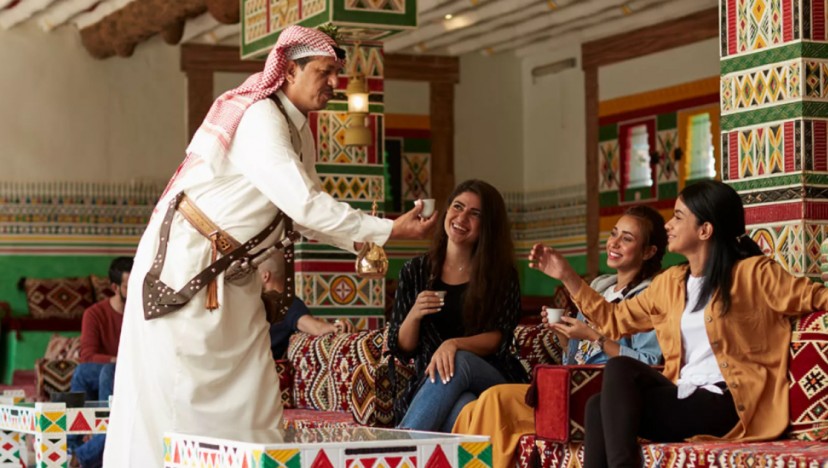Discover the magic of Aseer, a province that sits snugly in the southwest of Saudi Arabia. Aseer's elevated location and strategic position amidst the plateaus bestow the region with cooler weather than the rest of the Kingdom.
It's an ideal year-round destination for those seeking to escape the mundane for a while.
Moreover, Aseer is a treasure trove of cultural heritage, art, architecture, and cuisine-all sweetened by the generosity of the locals.
The region is easily accessible via Abha International Airport, with regular direct flights from Riyadh and Jeddah taking no longer than two hours. The international airport also serves direct flights from neighbouring countries.
Additionally, car or bus rides from Mecca, Jeddah, and Riyadh make it easy to include Aseer in your itinerary.
Things to do in Aseer
[embed]https://www.instagram.com/p/C-sXk3utZxg/?utm_source=ig_web_copy_link&igsh=MzRlODBiNWFlZA==[/embed]
Nature's galore
Half of the Kingdom's greenery lies within Aseer, home to the largest protected natural areas in Saudi Arabia. Nature lovers can surrender themselves to the calming embrace of Aseer's lush landscape and enjoy exploring its green mountains, dense forests, and stunning valleys.
Thaib Al Yamani
Al Bardani Valley, or Thaib Al Yamani, is an idyllic natural sanctuary featuring ridged, steep mountains that descend into softer, greener valleys and perennial streams.
Beloved by locals and tourists alike, it offers a tranquil setting perfect for reconnecting with oneself and feeling inspired. It is also an ideal spot for hiking, camping and photography.
View this post on Instagram
Al Birk Beach
Al Birk Beach, located along the Red Sea coast, beckons with its glistening blue water and white sandy beach. The many seabirds flying overhead and the coral reef underneath will make you feel like you have stepped inside a painting.
For thrill-seekers, there are many water sports options to choose from, including surfboarding, diving, and kayaking.
Jurf Reedah Reserve
Journey through the Sarawat mountains to reach this misty, dew-kissed nature sanctuary where ancient juniper forests, wild olives, and acacias flourish.
If you are an avid birdwatcher, several unique species of birds, including the Arabian woodpecker and the Aseeri magpie, await your presence.
Valley Resort
Valley Resort in Wadi Bin Hashbal offers guests the opportunity to relax amidst the verdant scenery. Guests can walk around and explore the resort or opt for a ride in colorful carts, minibusses, electric scooters or bicycles.
When tired, various seating options are available, where hot drinks and a traditional bread called "mifa" are served.
Abha Dam Lake
Abha Dam Lake, one of the Kingdom's largest man-made lakes, lies in the heart of Abha. The best times to visit are at sunrise or sunset, when shimmering sunlight dances across the lake's surface.
Art and cultural legacies
[embed]https://www.instagram.com/p/C4gUwKIIyRx/?utm_source=ig_web_copy_link&igsh=MzRlODBiNWFlZA==[/embed]
Aseer's history and culture are intertwined with its captivating architecture and enchanting folklore.
Spanning over seven centuries, the story of Aseer is still being written thanks to the cordiality and ardent commitment of the Aseeri people to sustainable tourism.
Al-Qatt Al-Asiri designs
The poetry of nature is expressed through several Aseeri art forms, including the Al-Qatt Al-Asiri, a traditional interior wall decoration primarily practiced by women.
This ancient art form is known for its spontaneous art technique and is part of the Unesco Representative List of the Intangible Cultural Heritage of Humanity.
It is celebrated for fostering the transfer of knowledge between generations and enhancing social bonding and solidarity.
Traditionally, Al-Qatt Al-Asiri was primarily centred around women creating intricate decorations to adorn their homes. Today, its influence can be seen in pottery, interior designs, and artworks housed by the establishments mentioned below.
Rijal Almaa Heritage Village
[embed]https://www.instagram.com/p/Ct7DDRDsg36/?utm_source=ig_web_copy_link&igsh=MzRlODBiNWFlZA==[/embed]
Rijal Almaa Village, or Rijal Almaa Heritage Village, is a living history museum and has been nominated to join Unesco's World Heritage list.
The village consists of 60 palaces built from basalt stones and adorned with white quartz. Once a thriving trade route owing to its strategic location, it now offers a glimpse into the past.
Tourists can now wander through the ancient narrow valleys and beautifully crafted homes, experiencing a sense of being teleported back to the past. The museum reflects the soul of Rijal Almaa's heritage, displaying traditional weaponry, farming tools, jewelry, and clothing.
The local market sells traditional clothing and unique souvenirs, while the square hosts cultural events, attracting visitors and enhancing the atmosphere.
Archeological Dhahran Al-Janoub Village
Al Hawzah Village, or Dhahran Al-Janoub Village, is an archeological village that has preserved its heritage for centuries.
Featuring over 100 houses made from clay and tree branches, the village offers a window into the ancient Aseeri architecture, ancient pathways, and the Al-Hawza Mosque.
Dhahran Al-Janoub is a traditional market nearby that continues to attract merchants even today.
Other historical villages in Aseer that serve as living museums include Ghayya Village, Ibn Adwan Village, and Al Khalaf Village.
Fatima Museum in Abha
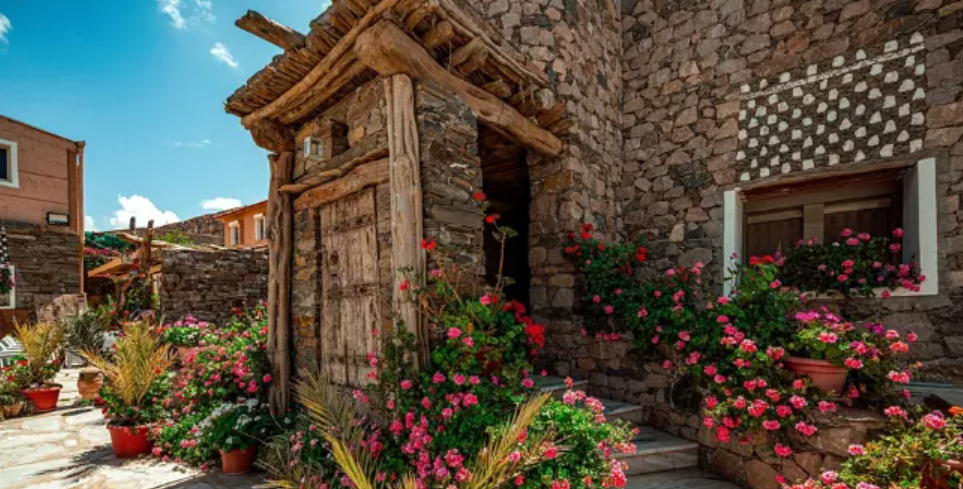
Fatima Museum provides crucial evidence of why art is the essence of Aseer's visual and cultural heritage. The artworks at the Fatima Museum illuminate the genuine connection Aseeri women share with art, reflecting their bond with nature and their social status that echoes their identity.
Housed in a traditional stone building, the Fatima Museum mirrors Aseer's architectural styles. Visitors are welcomed by aromatic plants and native ornamental trees, which lead to an open hall displaying explanations of Aseer's heritage and arts, particularly Al-Qatt Al-Asiri. Dedicated rooms display Al-Qatt Al-Asiri in an abstract manner on murals, pottery exhibits, or innovatively on utensils and textiles.
Visitors can directly engage with the art form and try hands-on training under expert guidance. Moreover, Fatima Museum also provides an opportunity to try on various traditional Saudi attires, including the Aseeri attire, take pictures and sample traditional dishes.
Enchanting Aseeri night at Wadi Tabb
Al Abu Nuqta Castles are nestled on the fertile banks of Wadi Tabb. This ensemble of six majestic fortresses and stone palaces, built with local mountain stones and decorated with distinctive valley marble, showcases a sublime architectural style that has stood the test of time. Each castle boasts a unique design, with its height and size reflecting its geographical and historical value.
Guests can explore the castles and then visit the marketplace, where traditional and heritage clothing, as well as mouthwatering Aseeri delicacies, are sold. Alternatively, they can also visit the library, filled with rare books and manuscripts.
For an authentic Wadi Tabb experience, guests are invited to spend a night within the serene castle walls complete with modern amenities. You'll get to wake up to the golden rays of the sun casting a spotlight on the waters and fragrant herbs of Wadi Tabb.
Shamsan Castle
For over a century, Shamsan Castle has stood atop one of Abha's highest peaks, at approximately 2200 meters. Constructed from mountainous rock slabs and fringed with traditional 'Arar' trees, the walls and halls of the castle offer a glance into
Other castles and palaces to explore include Al-Abu Suraah Palaces, Malik Palace, Al Maqar Palace, and Al Mushait Palace.
Haven for foodies
The best way to immerse yourself in a new culture is through the food. In Aseer, your stomach will be content, and your soul will be quenched with the warm hospitality of the Aseeri people, known as 'Hafawah.'
In Aseer, you will experience 'Hafawah' in the smallest details, such as being served the famous Saudi hot coffee with the right hand and a friendly smile.
The Aseer region was also recently awarded the World Region of Gastronomy title for 2024 by the International Institute of Gastronomy, Culture, Arts and Tourism (IGCAT) for its commitment to local sustainable development. This achievement marks the first time a region outside of Europe has been honoured with this award.
Slowly cooked to perfection, Haneeth
A must-try dish in Aseer is Haneeth, the 2024 Culinary Arts Region title winner. The roasted lamb is wrapped in Marakh or Sal herbs, served with warm rice or bread, and drizzled with Aseeri honey.
Haneeth is available everywhere in Aseer but is popular around coastal areas like Mahayel and Rijal Alma, where it symbolizes hospitality and communal joy.
Al-Asidah
Al-Asidah or Asidah is a dish that requires meticulous dedication and constant attention during its preparation. It is a symphony of locally produced ingredients, such as wheat or sorghum flour with salted buttermilk and honey.
The procedure also includes using traditional utensils, such as wooden sticks made from indigenous trees that are used to stir the buttermilk or containers made from local wood, all of which add to its distinct flavor.
Asidah symbolizes hospitality and generosity, cherished by the people of the Al-Hajar region, including Al-Namas, Balasmar, Balahmar, and Tanuma.
Excellence in the simplicity of Al-Areekah
A simple yet soulful breakfast dish born amidst the cool Sarawat Mountains, Al-Areekah or Areekah is a culinary gem. It is a warm breakfast concoction made with locally produced flour, ghee, and honey sprinkled with dates. Relish chilly Aseeri mornings comfortably with a cup of Saudi coffee, complemented by cream or nuts.
To enjoy the best of Areekah during your trip to Aseer, make sure to include visits to Khamis Mushait, Sarat Abidah, and Ahad Rufaida.
Safri dates
Safri dates are an Aseeri culinary staple available all over the region. The dates are typically smaller with chewy, tender texture. The dates are great eaten on their own and a lovely companion to aromatic dishes of any kind, especially rice or stew.
Some other mouth-watering culinary goodness you ought to try before leaving Aseer include Mashghoutha, Mifa Bread, Marqash Bread, Mabthutha, Tasabea, Thareef, and Mursah.
Other notable attractions to visit in Aseer
Al-Muftaha Village
Al-Muftaha Village, located in central Abha, is a local cultural centre that dates back over two centuries.
During weekends, the village comes alive with food and beverage stalls offering local and international cuisines, as well as art displays and live performances from local artists.
Rijal Almaa's Honey Cottage
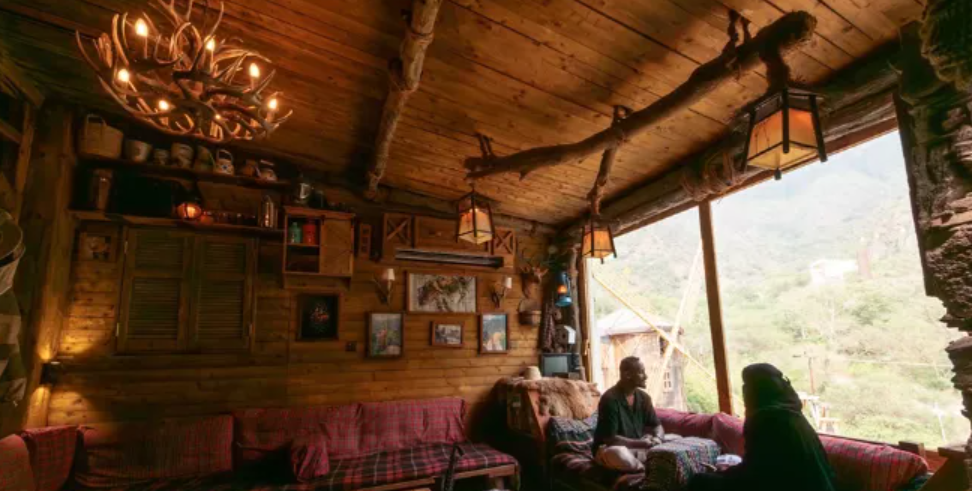
When in Aseer, a visit to Rijal Alma's Honey Cottage is a must. Experience the journey of this delicious gift from nature, from the blossom to the bottle.
Learn all about honey from the experts and the museum. Sample a variety of honey while promenading through the serene atmosphere embraced by lush greenery and then relaxing in the cottages.
Manaa's Mountain Cottage
The Mountain Cottage is where you can go for a quick getaway, allowing you to relax amidst the majestic peaks of Manaa, ensconced within the Tanomah region.
Constructed with a blend of recycled materials, the Mountain Cottage exudes a welcoming ambiance with its rustic interior and charming outdoor garden.
Cypress Cottage
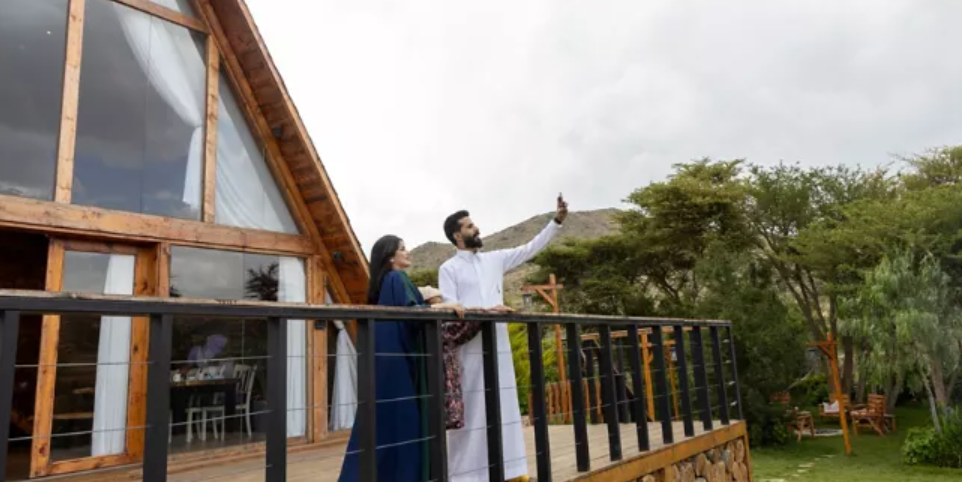
Designed to mimic a typical European cottage, the Cypress Cottage, stands amidst the lush expanse of Tabab Heights.
The Cypress Cottage offers a rejuvenating escape, with its bucolic charming furniture made from ancient wood, combined with modern amenities and the Tabab region's cool temperatures.
Tuesday Market
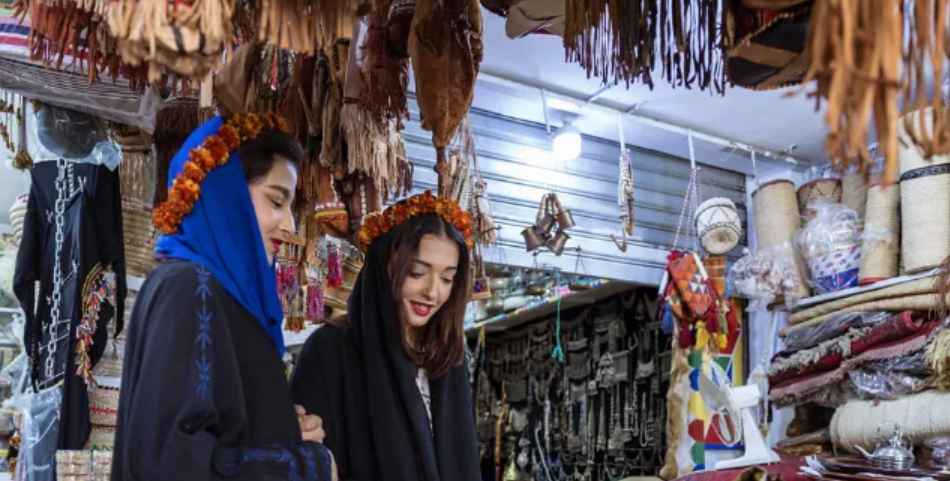
The Tuesday Market, which takes place in the heart of Abha, is over two centuries old.
In the past, the Tuesday Market served as a social and media hub in addition to playing a pivotal role in trade and the economy.
Today, the Tuesday Market still reflects a burst of hues, painting the zest of life. It houses over two hundred stalls that sell a vast assortment of products, such as honey, silver crafts, traditional pottery, ironwork, agricultural tools, traditional weapons, traditional cooking tools and aromatic plants such as basil and mint.
Traditional attire, including colorful stitched Aseeri dresses, yellow scarves, and popular jewelry, can also be found at the market.
[[nid:700037]]
